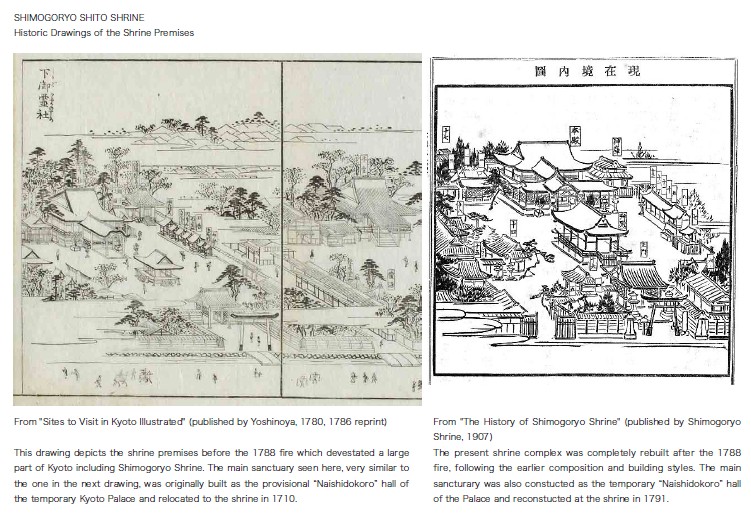Shrine premises
main sanctuary, offering hall, worship hall, north and south corridors
sacred palanquin sanctuary
The present architecture of the main sanctuary was relocated from the Imperial Palace in 1791, after the earlier sanctuary burned down in the great Tenmei fire of 1788. It was originally constructed as the provisional “Naishidokoro” hall, enshrining the emperor’s ancestral Sun Goddess Amaterasu, at the temporary Imperial Palace. In front of the main sanctuary stand the gabled offering hall (1793) and worship hall (1793) with an undulating bargeboard; north and south corridors (1830) with hip-and-gable roofs extend to the sides. The unique composition of this sanctuary with roofs of various forms intersecting to create a series of interior spaces is characteristic to Goryo shrines in Kyoto and the main sanctuary of Shimogoroyo Shrine is particularly notable as an early example. These buildings are Kyoto City designated Tangible Cultural Properties.
Subordinate shrines and enshrined deities
Shinmei Shrine Amaterasu Ōmikami, Toyouke-no-Ōkami
Hachiman Shrine Hachiman-no-Ōkami
Kasuga Shrine Kasuga-no-Ōkami
Sarutahiko Shrine Sarutahiko-no-Ōkami
”Aidono” Shrine Suika Shrine Yamazaki Ansai
”Aidono” Shrine Great Poet Kakinomoto Kakinomoto-no-Hitomaro
Inari Shrine Inari-no-Ōkami
Tenmangu Shrine Kitano-no-Ōkami
Munakata Shrine Tagorihime-no-Mikoto, Tagitsuhime-no-Mikoto Ichikishimahime-no-Mikoto
Five Shrine “Aidono” Hie-no-Ōkami, Atago-no-Ōkami,
Taishogun-Hachijin, Takachiho-no-Kami, Inbe-no-Kami
a:2199 t:3 y:2

